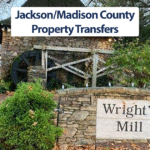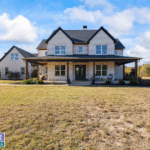Caleb Meriwether, Haven Insurance Partners, visits with Dan Reaves, host of ‘The Dan Reaves Show,’ today, and each Wednesday at 3:30 p.m., to discuss all things insurance.
When most people think about what drives their insurance costs, they picture things like the age of their home, the value of their car, or their past claims history. While those all play a role, one of the most powerful factors influencing what you pay for insurance is something you can’t easily change: where you are located.
How Your Location Impacts Insurance Rates
Insurance pricing is ultimately about risk — the likelihood that something will happen that triggers a claim. Your physical location provides insurers with a tremendous amount of insight into that risk. Across nearly every type of policy, location helps determine both the chance of loss and the potential cost of that loss.
Here are a few of the major location-based factors insurers use when setting premiums:
- Natural Hazards
Areas prone to tornadoes, flooding, hail, or wildfires face greater potential for large losses. Properties in those zones usually pay higher premiums or require special deductibles or exclusions. Updated climate data and satellite mapping allow insurers to pinpoint this risk down to a neighborhood—or even parcel—level.
- Proximity to Fire and Emergency Services
The closer a property is to a fire station or a hydrant, the faster help can arrive, and the lower the expected damage from a fire. Fire protection ratings are a major driver of homeowners and commercial property rates, especially in rural areas.
- Construction and Local Infrastructure
Buildings constructed with fire-resistant materials or located near reliable water and electrical systems often receive better rates than older structures in under-maintained areas.
- Population Density and Traffic
Densely populated urban areas have more accidents and liability exposures, which raises premiums for auto and business liability coverage. Conversely, very remote properties may be more expensive to insure because response times are longer.
- Crime Rates — A Growing Concern
Among all the geographic variables, local crime data is one of the strongest predictors of claims for theft, vandalism, and even certain liability losses. It’s also one of the most misunderstood.
How Crime Rates Influence Property Insurance
Property insurance — whether for a home, a rental, or a commercial building — protects against loss or damage to your physical assets. That includes everything from fire and wind damage to theft and vandalism. Because crime can directly trigger a claim, insurers watch crime statistics closely.
- Theft and Burglary Claims
Insurers analyze historical loss data for each ZIP code or even each census tract. If the area has a higher frequency of burglary or theft claims, the base rate for property coverage increases. For homeowners, that means higher premiums or higher deductibles. For commercial properties, it can also mean stricter security requirements before coverage is offered.
- Vandalism and Malicious Mischief
Repeated vandalism claims — broken windows, graffiti, or property damage — raise the perceived risk in that territory. Many commercial policies group vandalism with theft, so losses of this kind can drive surcharges across the board.
- Arson and Fire-Related Crime
Arson rates in a given community affect property pricing, particularly for unoccupied or distressed buildings. In urban or industrial areas with a history of deliberate fires, carriers may decline coverage or limit available limits unless robust fire-suppression systems are in place.
- Liability Exposure
Crime doesn’t just lead to property damage — it can also create liability risk. For example, an apartment complex with poor lighting or inadequate security measures in a high-crime neighborhood could face claims if a tenant or visitor is harmed. Carriers increasingly factor neighborhood crime scores into their general liability and premises-liability pricing.
What Insurers Look At
Modern insurers no longer rely solely on ZIP-code averages. They’re incorporating crime-mapping technology, police-report databases, and real-time data to refine risk by block or even parcel. In many areas, advanced geocoding systems now pull from:
- FBI Uniform Crime Reports
- Local police data on burglaries, assaults, and vandalism
- Trends in calls for service and response times
- Commercial crime indices provided by data vendors
The result: two properties just a few streets apart can have dramatically different rates depending on their immediate surroundings.
What Property Owners Can Do
You can’t move your home or office, but you can reduce your exposure. Taking proactive security measures shows underwriters that you’re managing risk — and may qualify you for credits or discounts.
Practical steps include:
- Installing monitored alarm systems and exterior lighting
- Using smart cameras and entry sensors that record activity
- Keeping landscaping trimmed to remove hiding spots
- Documenting serial numbers and maintaining video evidence of property
- For businesses, ensuring parking lots and perimeters are well lit and regularly patrolled
Many insurers now offer smart-home or smart-business discounts when connected devices are verified, and some will re-rate your policy mid-term if new technology meaningfully reduces risk.

















